Asus PN53 Mini PC review: A very versatile little PC that can be thoroughly recommended
A potent Mini PC with lots of I/O ports and excellent upgraded potential
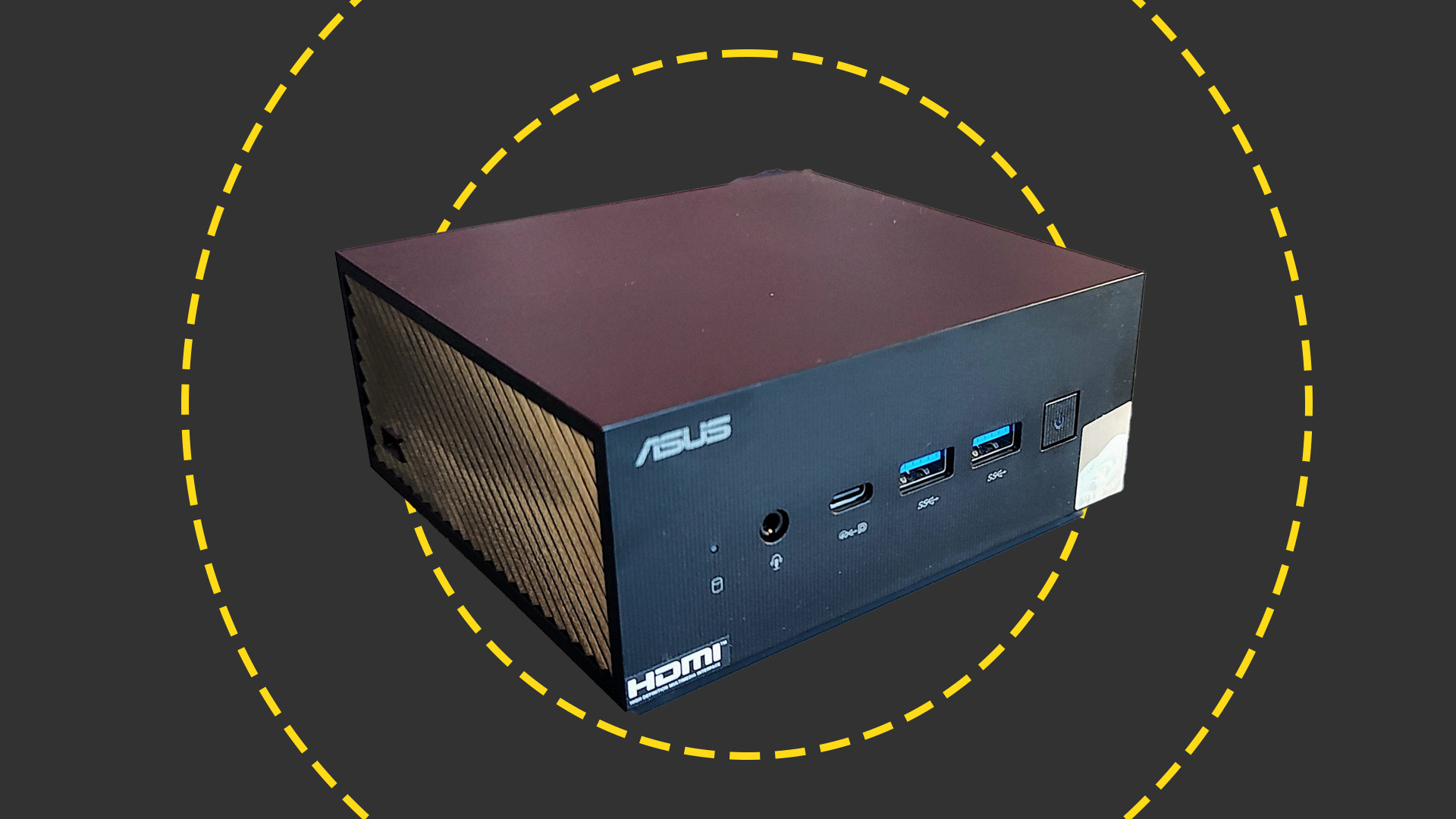
-
+
Wide range of ports
-
+
Potent AMD chipset
-
+
Easy to disassemble and upgrade
-
+
No thermal issues even under heavy load
-
-
No dGPU option
-
-
No memory card slot

READ MORE
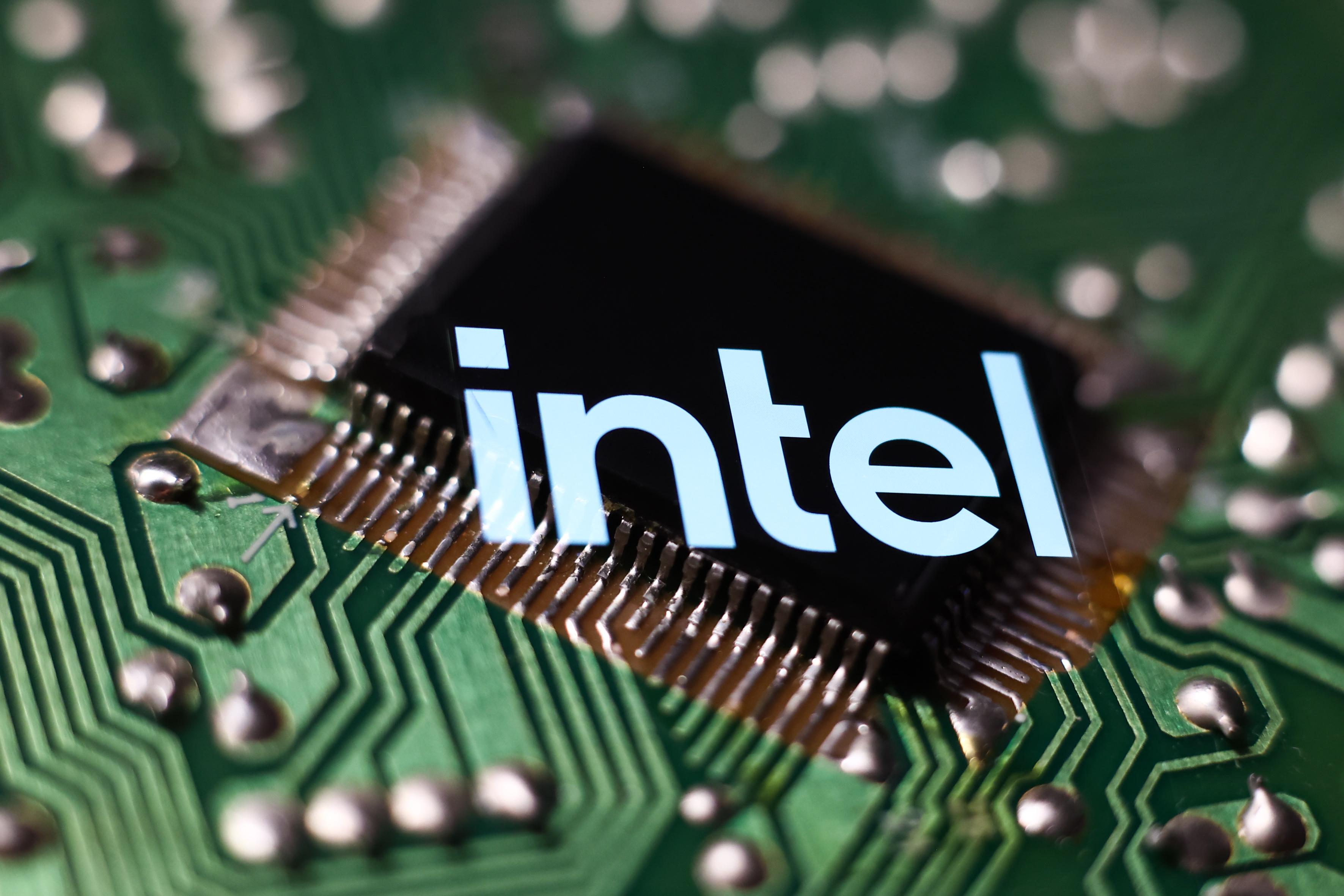
Asus has been a major fixture of the Mini PC market since the release of the PN30 in early 2020. Since then, the PN series has developed apace, with each year bringing an upgraded model with improved connectivity and more potent Intel and AMD silicon. Here we are looking at the Asus PN53.
Asus' UK store is rather thin on Mini PCs at the moment, only having stock of the Intel-based PN 64. If you fancy the cut of the PN53's gib after reading this review but have trouble sourcing one, don't worry; the Geekom AS6 is exactly the same product assembled and distributed by Chinese OEM Geekom in a deal with Asus. It is easily available and, at the time of writing, is yours for just £679 inc VAT (£565 ex VAT), shipping from a UK warehouse.
Mini PCs continue slowly but steadily eating into the market share of their bigger brethren, desktop PCs. The Mini PC market – which includes everything from Apple's Mac Mini to Intel's NUC boxes to the likes of the GMKtec NucBox G1 – was worth around $20.8Bn in 2022 and is expected to grow to $30.8Bn by 2030. Clearly, there's money in petite computers.
Asus PN53 Mini PC: Design
The PN53 bears a clear family resemblance to previous Asus Mini PCs like the PN 52 and the PN 51 reviewed here in May 2021. It's really only the physical size and the number and arrangement of the I/O ports that distinguish them one from the other.
Weighing 900g and measuring 120 x 130 x 58mm, the PN53 is larger and heavier than the PN51, but it still takes up next to no space on your desk. If you don't want to give up any desk space Asus bundles a VESA bracket if you want to fit to the back of a monitor. The all-metal PN53 is tested to the MIL-STD 810H military standard for resilience to shock, vibration, and particle/moisture ingress, so it should prove immune to all but the harshest treatment.
Ports the PN53 has aplenty. On the front, you'll find two 5Gpbs USB-A ports, a USB4-spec Type-C port, and a 3.5mm audio jack. On the back are another three USB-A ports, a 2.5GbE Ethernet port, two HDMI 2.1 and one DisplayPort 1.4 video output, and a second USB4 Type-C. Both the Type-C ports support DP 1.4 Alt Mode video output. The section of the rear that houses the HDMI and DisplayPort video outputs is listed as configurable, so you can specify a third HDMI port or a COM or VGA port.
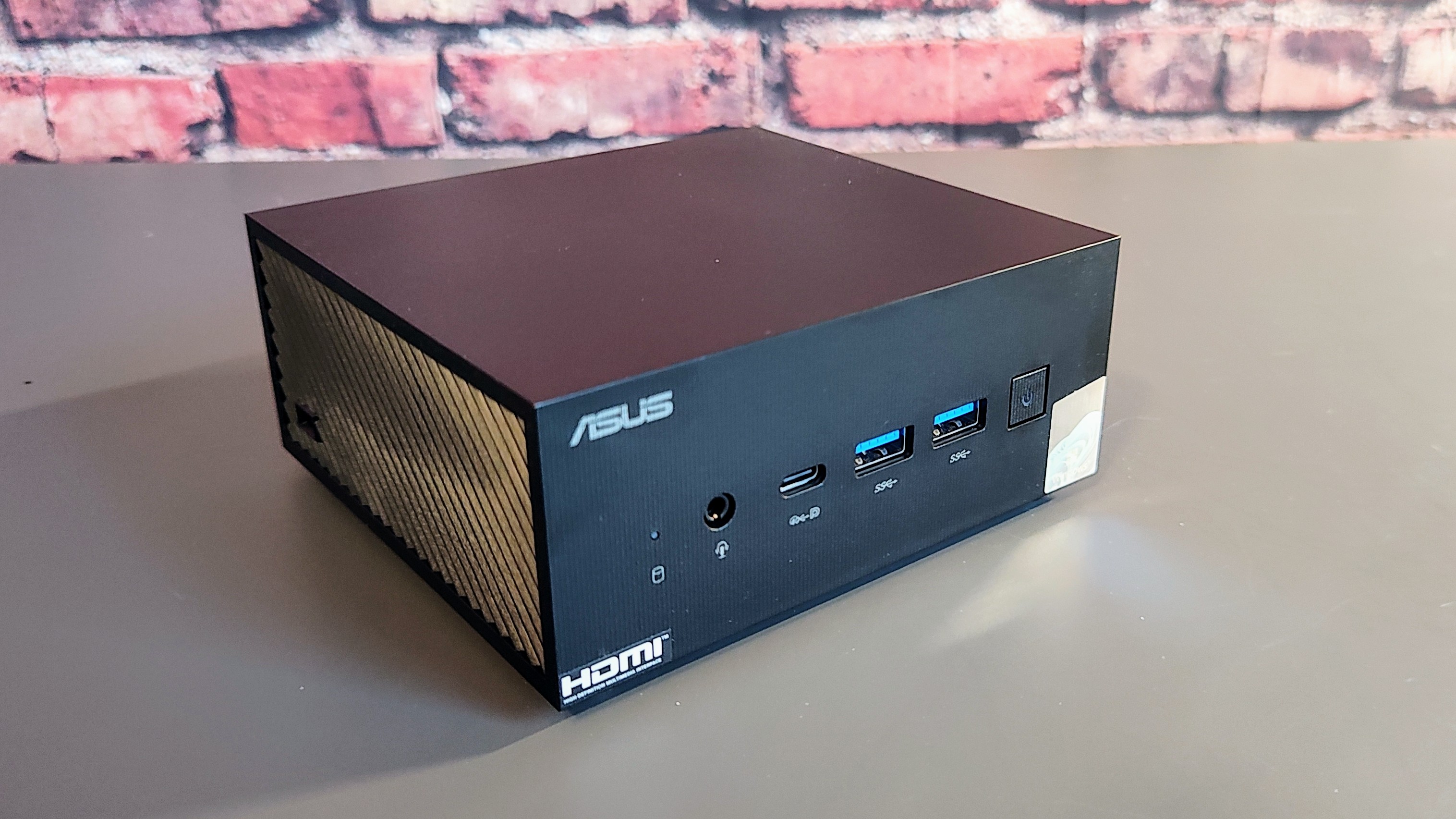
There's a Kensington lock on the left side and a small padlock loop on the back to prevent anyone from getting inside the PN53 who shouldn't by locking the two halves of the outer case together. Accessing the internals is very straightforward, assuming you have authorization and a Philips screwdriver.
Sign up today and you will receive a free copy of our Future Focus 2025 report - the leading guidance on AI, cybersecurity and other IT challenges as per 700+ senior executives
Once you've undone the four screws that hold it together and opened up the PN53, there is plenty of scope for expansion with both SODIMM RAM slots and both 2280 NVMe SSD mounts easily accessible. Once both SSD slots are populated, they can be set in various RAID modes in the BIOS. There's also room to add a 2.5-inch SATA HDD in the base but you need to disassemble the entire thing to install one. One thing the PN51 lacks is a memory card slot of any description.
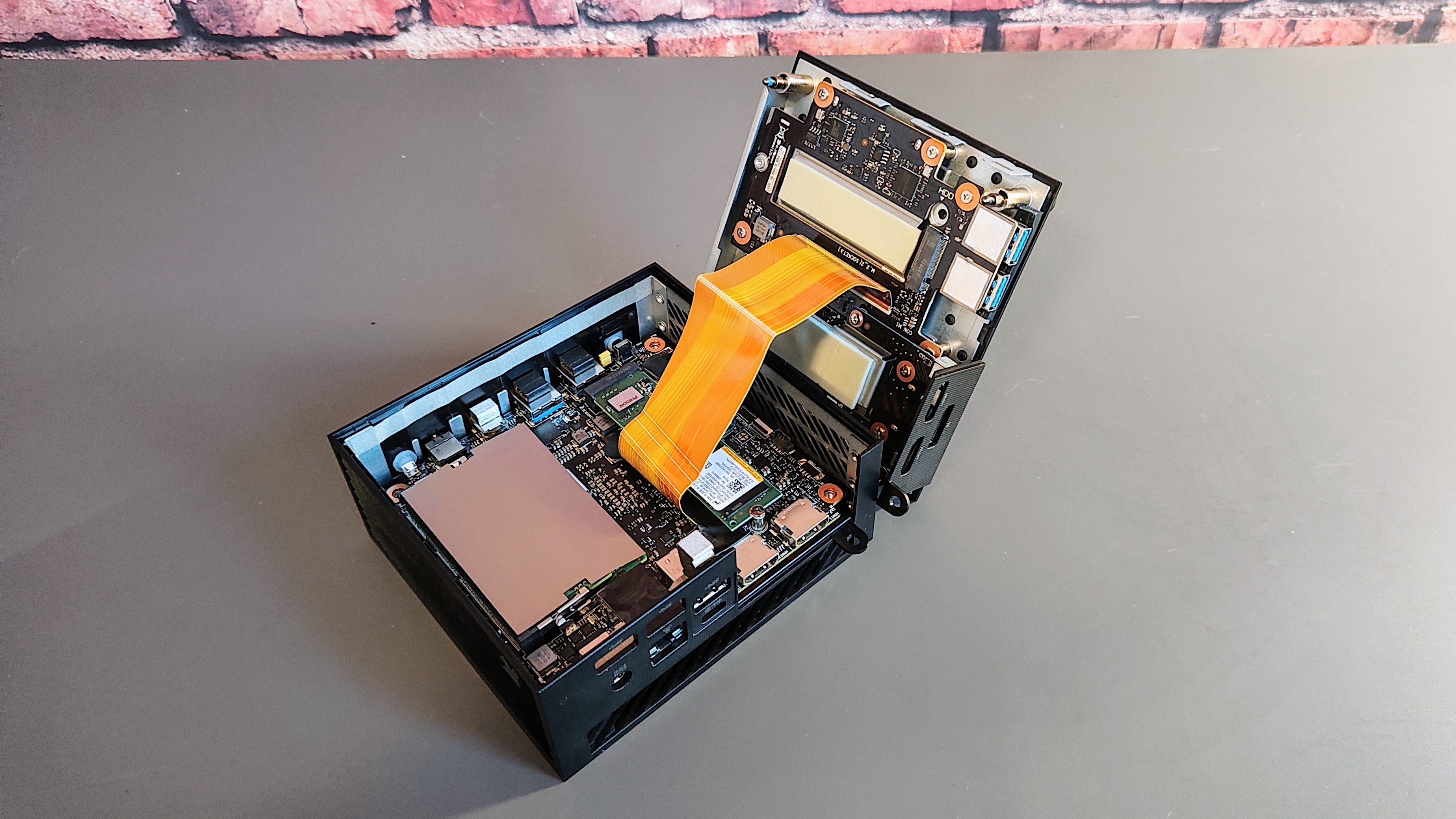
Asus hasn't skimped on the wireless connectivity either, with 6GHz Wi-Fi 6E supported by the MediaTek MT7922 Wi-Fi card and a reasonably up-to-date version of Bluetooth, v5.2 offering superior audio performance to v5.1 with support for Enhanced Attribute Protocol (EATT) and Isochronous Channels.
The Asus BIOS is nothing if not comprehensive. The system is equipped with both firmware and discrete TPMs, with the firmware option enabled by default. The VRAM allocation can be changed to anything between 128MB and 8GB, which is useful if you anticipate running GPU-intensive tasks, though there is an Auto mode that's engaged by default.
You can also disable specific USB ports in the BIOS - useful for IT administrators who want to lock down systems and prevent users from connecting potentially harmful USB drives. The LAN port, as well as the WLAN and Bluetooth radios, can also be disabled via the BIOS.
Asus PN53 Mini PC: Performance
The Ryzen 9 6900HX processor in the PN53 is a 45W 8-core and 16-thread component with a maximum clock speed of 4.3Ghz and is fabricated using TSMC's 6nm process. In addition to the minor improvements in performance over the Zen 3 / Cezanne family, the integrated GPU has been upgraded from the Vega-based chip to the RDNA2-based Radeon 680M.
The 680M is not as potent as the 780M iGPU, which even shades the new Intel Arc iGPUs that form part of the new Meteor Lake SoCs, but it easily outperforms Intel's Iris Xe graphics chips and supports ray tracing, though that doesn't mean it can run ray traced games.
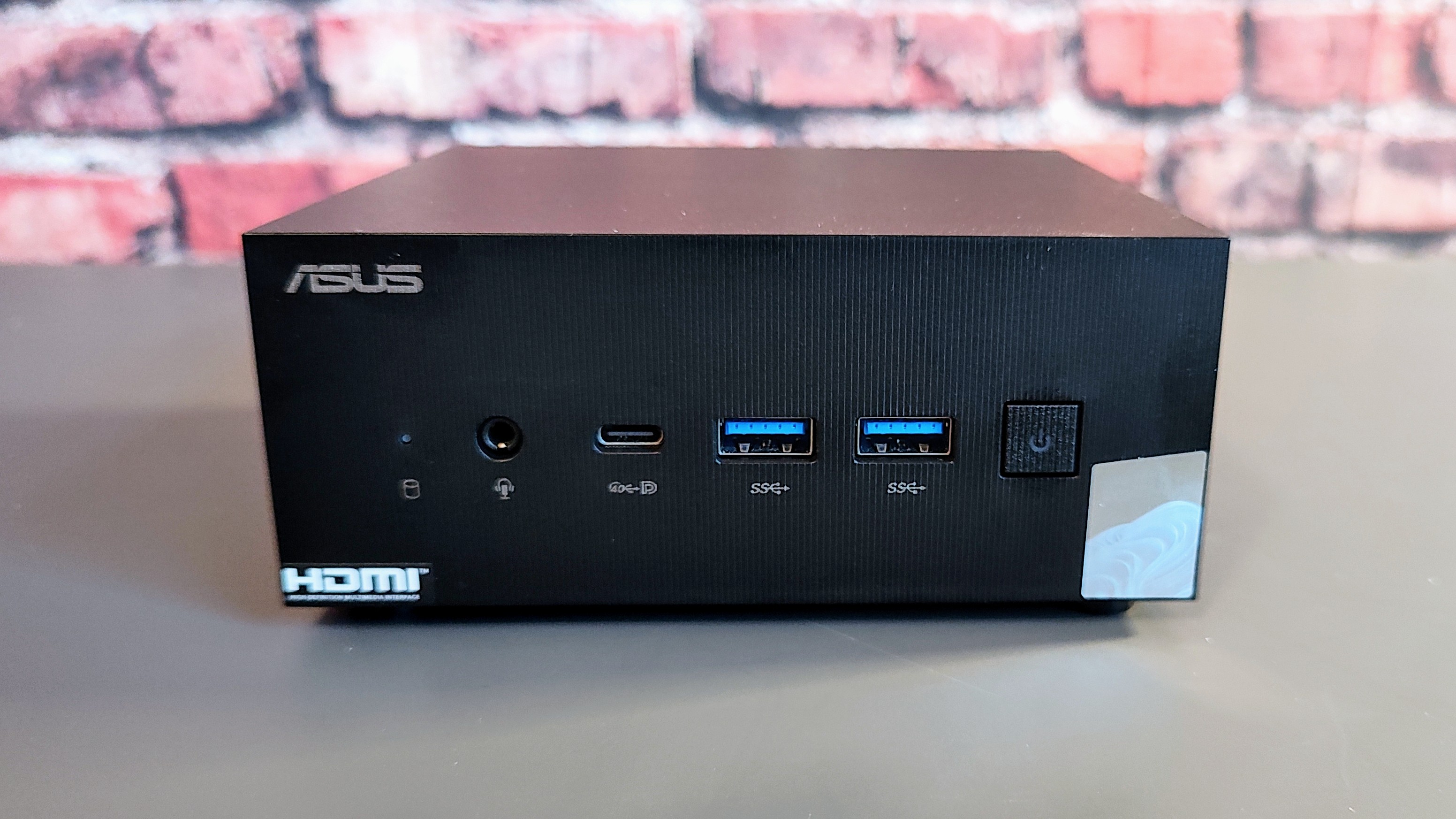
In our standard 4K multi-media benchmark, the PN53 scored 298 points. That compares to the 240 scored by the PN51, which ran on an AMD Ryzen 7 5700U CPU. That's broadly the same level of performance that we'd expect to see from an Intel Core i5-12500H and mid-way between an M2-powered MacBook Air and an M3-powered MacBook Pro. In short, it is a decent performance level and suitable for all but the most demanding tasks.
The Cinebenc R23 test produced an equally impressive set of scores: 11,354 in the multi-core and 1,471 in the single-core tests. Again, that's considerably more than you'll get from any laptop costing similar money, which, given the emphasis on minimizing size, is the best prism through which to look at the PN53's performance levels.
RELATED RESOURCE

Find out how you can get the most out of your generative AI investments
DOWNLOAD NOW
The graphics performance is similarly handy. The 680M ran the SPECviewperf 3dsmax 3D modeling test at 28.4fs, which is nearly double what we'd expect from an Intel Iris Xe iGPU and very close to the results we'd expect from a low-end discrete GPU like the Nvidia RTX 2050.
It should go without saying that the Asus PN53 is not a gaming machine, and there's no option to fit a discrete GPU, but it managed to run the GFXBench Aztec Ruins Normal Tier benchmark at 112fps offscreen which means it has the chops to run casual or less demanding titles like Prodeus or Serious Sam 4 at FullHD albeit with the detail levels knocked back a bit.
Usefully, the PN53 can run flat out without showing any signs of thermal stress. Running the FurMark and Prime95 stress test programs side-by-side, the CPU and iGPU ran in the high 90% utilization range for three hours. Not only was there no drop-off in performance, but the fan noise never rose above an easily tolerable hum once the fan mode had been set to Auto in the BIOS.
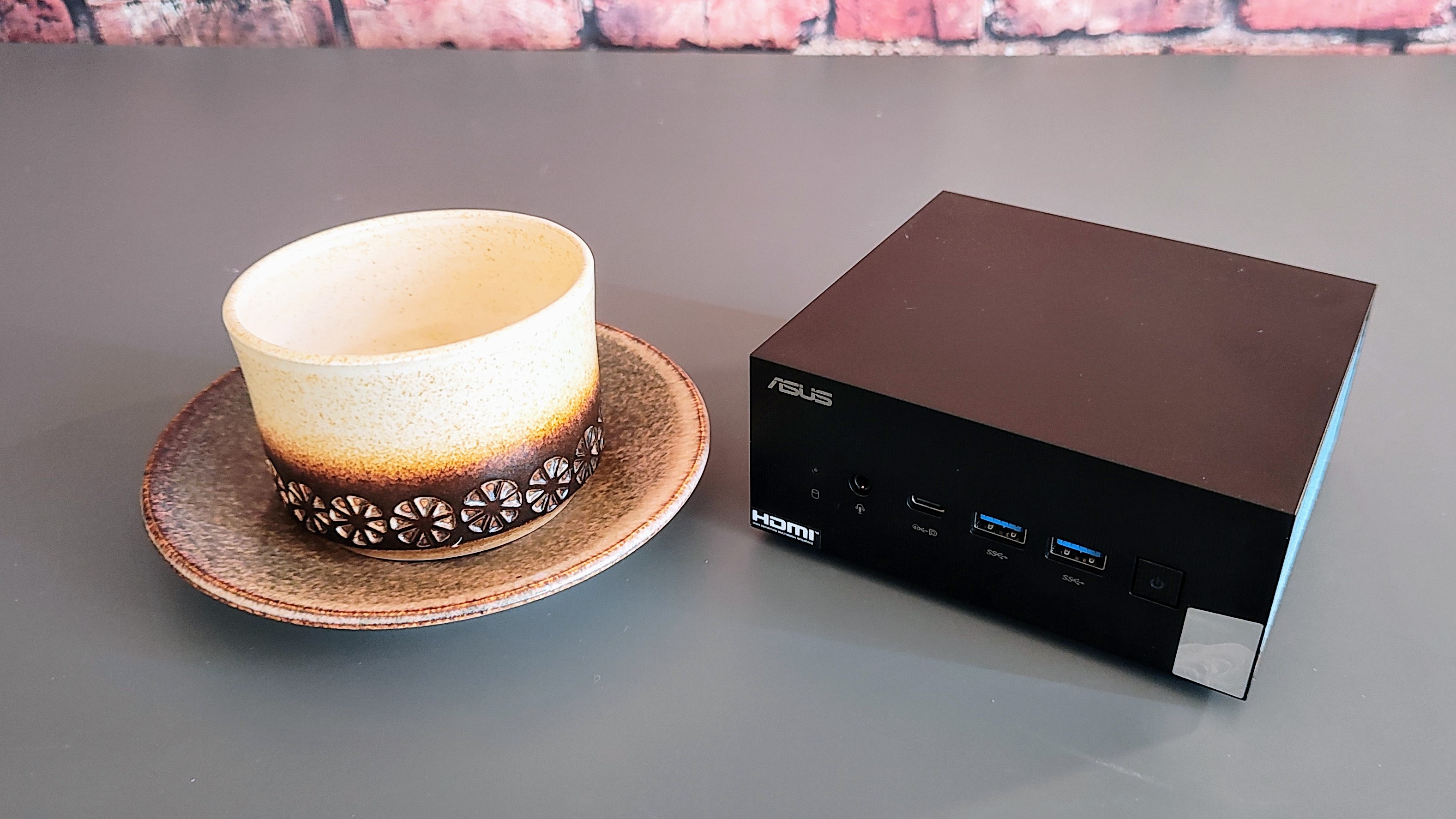
Our review machine came with a 512GB Micron SSD, which proved to be a middle-of-the-road performer, recording sequential read and write speeds of 2,932MB/s and 1,912MB/s, respectively.
Asus PN53 Mini PC: Is it worth it?
At the time of writing the PN53 doesn't seem to be generally available in the UK, but in the USA, the Ryzen 7 7735HS model with 32GB of RAM and a 1TB SSD will set you back $860 or roughly £675 ex VAT. In the UK, you can get that same model, but with Geekom branding for £639 inc VAT or the Ryzen 9 model which we had on test for £679 inc VAT (£532 and £565 ex VAT respectively).
That makes the Geekom models very good value, given the number of ports, expansion possibilities, and the base performance of the AMD SoC. You certainly wouldn't get a laptop that can match the PN53 for performance or versatility for the same price, even if you factor in another £250 for a descent monitor like the 27-inch MSI Pro MP273QP and a good keyboard/mouse package like Logitech's evergreen MK270.
Hardcore gaming or graphics wrangling aside it's hard to see to job that the PN53 isn't well suited for. The superb array of I/O ports makes it a natural for any use that demands multiple monitors while the options to increase the amount of RAM and storage make it as future-proof as possible. All-in-all it's a very versatile and very good value little PC that can be thoroughly recommended.
Asus PN53 Mini PC specifications
| Processor | 8-core 3.3GHz/4.3GHz AMD Ryzen 6900HX processor |
| RAM | 32GB (2 x 16GB SODIMM sockets) 4,900MHz DDR5. Maximum 64GB |
| Storage | 512GB NVMe PCIe Gen 4x4 SSD |
| Storage expansion | 2.5in SATA HDD (up to 2TB) |
| Graphics outputs | 2 x USB-C DP Alt Mode, 2 x HDMI 2.1, 1 x DisplayPort 1.4 |
| Other ports | 2.5G Ethernet LAN, 5 x USB-A 3.2 Gen 1, 2 x USB-C 4, 3.5mm audio jack |
| Wireless | Wi-Fi 6E (2.4/5/6GHz) & Bluetooth 5.2 |
| Dimensions | 120 x 130 x 58mm |
| Weight | 900g |
| Operating System | Windows 10 Pro |
Over the years, Alun has written freelance for several online publications on subjects ranging from mobile phones to digital audio equipment and PCs and from electric cars to industrial heritage. Before becoming a technology writer, he worked at Sony Music for 15 years. Quite what either occupation has to do with the degree in Early Medieval History he read at the University of Leeds is a bit of a grey area. A native of Scotland but an adopted Mancunian, Alun divides his time between writing, listening to live music, dreaming of the glens and dealing with an unhinged Norwegian Elkhound. For ITPro, Alun reviews laptops and PCs from brands such as Acer, Asus, Lenovo, Dell and HP.
-
 Gender diversity improvements could be the key to tackling the UK's AI skills shortage
Gender diversity improvements could be the key to tackling the UK's AI skills shortageNews Encouraging more women to pursue tech careers could plug huge gaps in the AI workforce
By Ross Kelly Published
-
 Researchers claim Salt Typhoon masterminds learned their trade at Cisco Network Academy
Researchers claim Salt Typhoon masterminds learned their trade at Cisco Network AcademyNews The Salt Typhoon hacker group has targeted telecoms operators and US National Guard networks in recent years
By Emma Woollacott Published
-
 HPE says unified channel strategy won't force Juniper partners to generalize
HPE says unified channel strategy won't force Juniper partners to generalizeNews Does the company embrace specialists or want a full portfolio push? The answer, it seems, is both
By Jane McCallion Published
